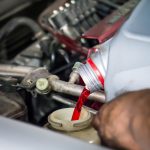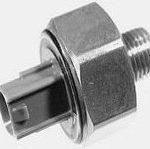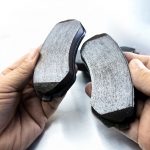Find Your Online Car Repair Manual Today! ->>
When it comes to what parts are better I want to make it clear that I am just providing my opinion, that is based on my own personal experiences and that your results will most likely vary. Some background on where my opinion comes from may also be helpful.
My original training, 26 years ago was provided by General Motors and I was in a special program where I worked at a GM dealership part time while going to school and then full-time after I graduated the program. In fact I stayed at General Motors dealerships for nearly 20 years. When you work at a dealerships service department you generally use factory auto-parts.
When are factory auto-parts better
His Ford factory serpentine drive belt lasted until about 120,000 miles. At this point he asked me to replace the drive belt because it was developing some cracking on the rib side of the belt. When I took the factory original belt off I could see that the cracking really wasn’t that bad and if it was my vehicle I would have left it on for another 20,000 miles or so.
Since my friend had already bought the aftermarket replacement I went ahead and installed the new belt. The difference between the two drive belts was noticeable with the naked eye. The aftermarket belt was thinner and lighter than the factory serpentine belt. And therefore you will not be surprised that the belt lasted about 60,000 miles and broke while the vehicle was out on the road.
The drive belt on a 7.3 L engine is quite long and drives many accessories. On older engines the routing diagram may be hard to see. I have one on this website Just in case you happen to be reading this article and you are looking for a 7.3 L super duty belt diagram.
When are aftermarket parts better
On some models this would include a valve cover gasket, water pump, cam and crank Seals, belt tensioner and spring, the timing belt itself as well as any external rubber drive belts. Several aftermarket companies offer these complete kits. Some factory or dealer parts department will not offer an all-in-one kit but instead sell each individual part separately.
As you can imagine it can be a lot more expensive in parts if you need everything that is contained in an aftermarket kit and you decide to buy them at a dealerships parts department. A visitor posted a story about their Toyota timing belt replacement that was quoted at under $500 but eventually turned into a three day repair with the cost of about $1300.
This is what happens when you get a price for a timing belt only replacement and you wind up needing the water pump, all the seals and have to buy them all separately at factory auto part prices. If you are interested in seeing the latest posts to this website this next link will take you back to the online auto repair blog homepage.









